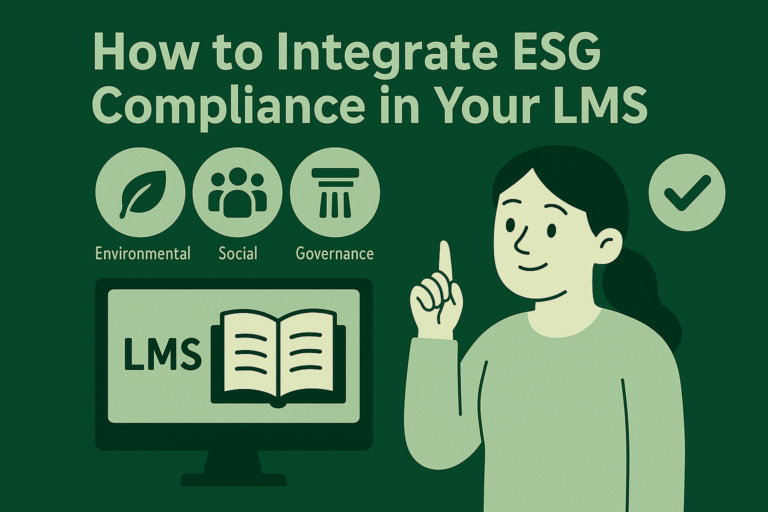The eLearning industry was valued at over $197 billion in 2020 and is projected to be worth $840.11 billion by 2030. The industry is growing at a tremendous speed, and that is the reason most businesses are adopting eLearning as a new revenue stream. For instance, YouTube is soon launching its eLearning platform, which will give users an interrupted learning experience. If you are planning to extend your domains and use eLearning as a new revenue source, this article may be just right for you. Here, we will be talking about the eLearning trends you must follow in 2023. So, let us start:

eLearning trends you must follow!
There is immense pressure on organizations to serve the audience with quality content and eLearning material. This has led to a major shift in the eLearning industry and more with the methods. Let us discuss the best practices for eLearning in 2023!
1. Learning experience platform
Along with the LMS platforms, the LXP systems are now in high demand. With the traditional LMS, you get to build courses with the help of instructors and course designers. But with the LXP system, you are guided on the external resources as well which will help you build better courses.
The platform works with AI, the more a user utilizes the platform, the more targeted suggestions it makes. It is a better resource for non-compulsory training, whereas, for important and mandatory training, organizations are still depending on LMS, as they should. because each training is different concerning the organization’s demands. Without human interference, at this point, it is difficult to curate a training program.
2. Mobile-first learning!
The scenario is changing from mobile learning to mobile-first rapidly. The courses have evolved over the year, and mobile responsiveness has also grown to give users a better learning experience. Mobile first learning requires developing an app where the providers give users a seamless learning experience through easily navigable features.
The ability to download the content and view it offline is a must, which helps the user learn anywhere, anytime, giving the true essence of mobile-first learning!
3. Changed assessments
The assessments are also changing and becoming more engaging than before. Before they were only based on multiple-choice questions but now the spectrum has evolved. The assessments now focus more on understanding the learner and having a deeper understanding of the audience’s learning.
One of the popular eLearning trends is performance-based learning, wherein the audience is given a real-life situation and then monitored to see how they react. The technology involves AR or VR, which helps them give a real-life experience and allows them can learn much better.
The assessments are becoming more inclusive now. Many organizations have an assessment that is for the visually impaired audience or any other disability. This way more and more people can make the most out of the provided resources.

4. Hybrid learning
We all must be aware of the hybrid mode of learning and training, which has recently caught up with the hype. It is often confused with blended learning, but of course, both are different. Hybrid learning involves learning through both online and face-to-face mediums in equal proportions, whereas, with blended learning, the major source is on-site training that is supported by online learning.
The online repository that the online resources have can be varied greatly from LMS to Google Drives. It depends upon the organization what resources they will be choosing for the purpose.
5. Cohort-based learning
It is a group of learners progressing together to complete a course. This comprises collaborative learning that helps the users engage better and keep their interest in the course. The courses have a definite end and starting time, which gives them higher completion rates. Also, there is more interaction between the instructors and the learners, which helps in determining the requirements easily.
The learners can also learn among themselves, which will promote additional skills within them.
6. Micro-credentials
These are the certificates given to the audience after the completion of a short course. They are gaining popularity as they validate certain skills required for different job roles. In an educational setting, micro-credentials can be transferred from one institute to another, increasing your academic value. As far as the workplace is concerned, micro-credentials are added to the resume to give it more value.
7. Subscriptions and memberships
We have all seen this model gain popularity, where the audience accesses the course for an extended duration. This pattern embarks a sense of community among members that will help them learn better. The course creators often create different course sets for various target audiences. Often, they give different resources and materials for every level and it may vary with the organization’s needs.
They upload new content regularly that helps people learn better through community education. Often, there are rewards and badges associated with these courses that make them more exciting.
8. Artificial intelligence
AI is also being applied in various levels of the courses. AI helps automate tonnes of tasks, be it content suggestions, curation, or tagging. Also, it has helped in a deeper search for content and better suggestions to the target audience.
With time, we can see AI becoming part of the bigger picture and being applied to various forms of eLearning courses and training programs.
AI is one of the popular eLearning trends as it predicts the data and forecasting tasks. For instance, it can assist in understanding a user’s behavior and accordingly suggest courses or resources. This will help the users have a better and more seamless learning experience.

Let’s wrap it up!
Now is the time to think about utilizing eLearning resources if you are not! For you to give useful resources to your audience, you must know these eLearning trends.
Learn about your audience, monitor how you can be useful to them, and curate the resources accordingly. It depends on your business model and structure and what trends you have to follow for the successful distribution of e-learning resources.
Many LMS platforms are now revolutionizing themselves to give a better experience to their audiences and provide them with excellent resources. To check out how Acadle can help your business derive profit, click here: https://acadle.com/schedule-demo



